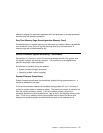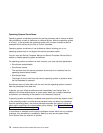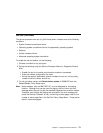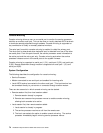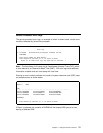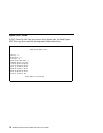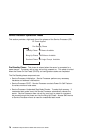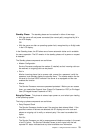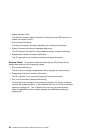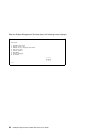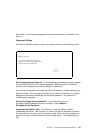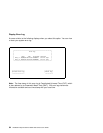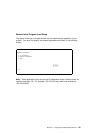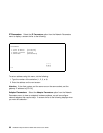Standby Phase: The standby phase can be reached in either of two ways:
With the server off and power connected (the normal path), recognized by OK in
the LCD display.
OR
With the server on after an operating system fault, recognized by an 8-digit code
in the LCD display.
In the Standby phase, the SP takes care of some automatic duties and is available
for menus operation. The SP remains in the standby phase until a power-on request
is detected.
The Standby phase components are as follows:
Modem Configuration
Service Processor configures the modem (if installed) so that incoming calls can
be received, or outgoing calls can be placed.
Dial In
Monitor incoming phone line to answer calls, prompt for a password, verify the
password, and remotely display the standby menu. The remote session can be
mirrored on the local ASCII console if the server is so equipped and the user
enables this function.
Menus
The Service Processor menus are password-protected. Before you can access
them, you need either General User (Power-On Password or POP) or Privileged
User (Privileged Access Password or PAP).
Bring-Up Phase: This phase is entered upon power-on, and exited upon loading
of the operating system.
The bring-up phase components are as follows:
Retry Request Check
The Service Processor checks to see if the previous boot attempt failed. If the
specified number of failures are detected, the SP displays an error code and
places an outgoing call to notify an external party if the user has enabled this
option.
Dial Out
The Service Processor can dial a preprogrammed telephone number in the event
of an IPL failure. The Service Processor issues an error report with the last
reported IPL status indicated and any other available error information.
Chapter 3. Using the Service Processor 79



